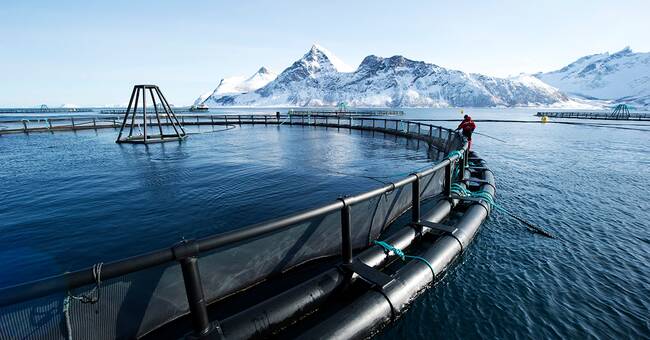To calculate how climate-friendly the farmed salmon is, the researchers measured climate footprints per nutrient content instead of per kilo.
Elinor Hallström is a researcher in sustainable nutrition at Rise and one of the researchers behind the study.
- In general, you usually look at the climate footprint per unit of weight, but it has been discussed for many years whether it is really a good unit to measure the function of food in. We have calculated the climate impact per kilo but in relation to how nutritious the product is.
In practice, very nutritious foods then have a lower environmental impact, Elinor Hallström explains.
Higher nutritional content
Friederike Ziegler researches sustainable seafood and has also been involved in the study.
- It will be very strange to compare a kilo of meat with a kilo of bread, for example.
It fulfills completely different functions in the diet.
Measuring in this way also has its shortcomings, but it better reflects the diversity that exists, says Friederike Ziegler.
According to the researchers, Norwegian salmon, which accounts for 95 percent of all salmon consumed in Sweden, has a higher content of several nutrients compared with beef, pork and chicken.
This applies, for example, to omega 3 fatty acids, vitamin D, vitamin B12, iodine and selenium.
Few follow the National Food Administration's recommendations
The National Food Administration's recommendations are that everyone should eat seafood two to three times a week, but only 31 percent of the adult population today eats according to the recommendations.
One reason for this, according to Elinor Hallström, is that they choose other alternatives instead of fish.
- A group of consumers excludes seafood because we must reduce the intake of animals in general.
This is generally true, but what is not talked about as much is that there is a great deal of variation between the different alternatives.
Farmed salmon still does well with other animal products, in terms of nutrition and climate impact, Elinor Hallström explains.
Fear of toxic substances
One reason for low consumption, which is discussed in the study, may be the public's concern that seafood has a high content of dioxins, heavy metals or antibiotics.
Surveillance of salmon farming from a control room in Norway.
Photo: Marius Fiskum
However, heavy metal levels in Norwegian farmed salmon have always been very low and the levels of dioxin have decreased over time.
This is due to the fact that the content of fish feed has changed over the last 30 years.
Today, dioxin levels are far below the limits in farmed salmon.
- There are those who buy wild-caught salmon because they think it is better.
But in wild-caught salmon from the Baltic Sea, the content of dioxins is ten to twenty times higher than in farmed salmon from Norway, says Friederike Ziegler.
Low use of antibiotics
The use of antibiotics has also been discussed, but according to Friederike Ziegler it is very low in Norwegian salmon farming.
- Norwegian salmon farming is the type of animal production in Europe that uses the least antibiotics, says Friederike Ziegler.

